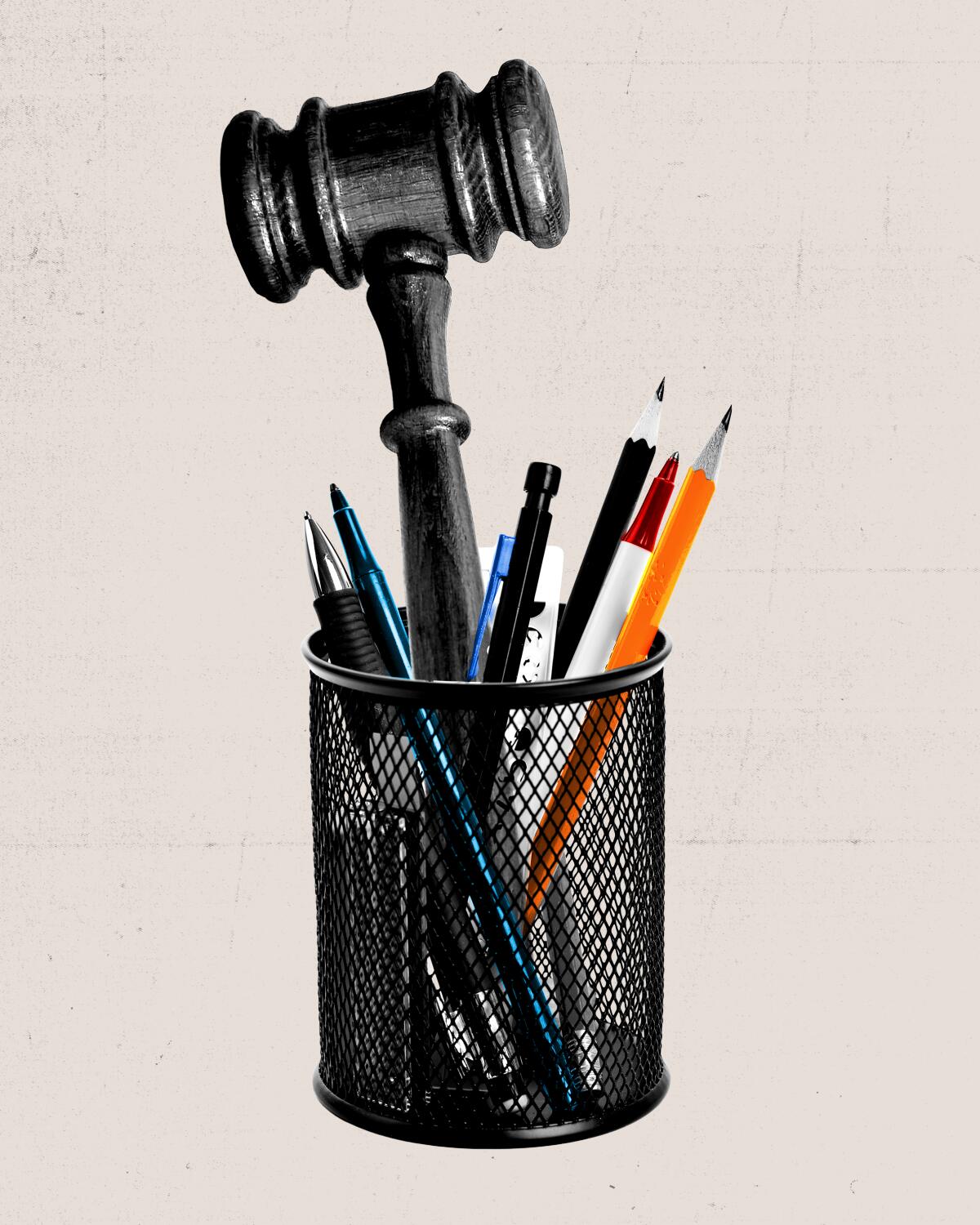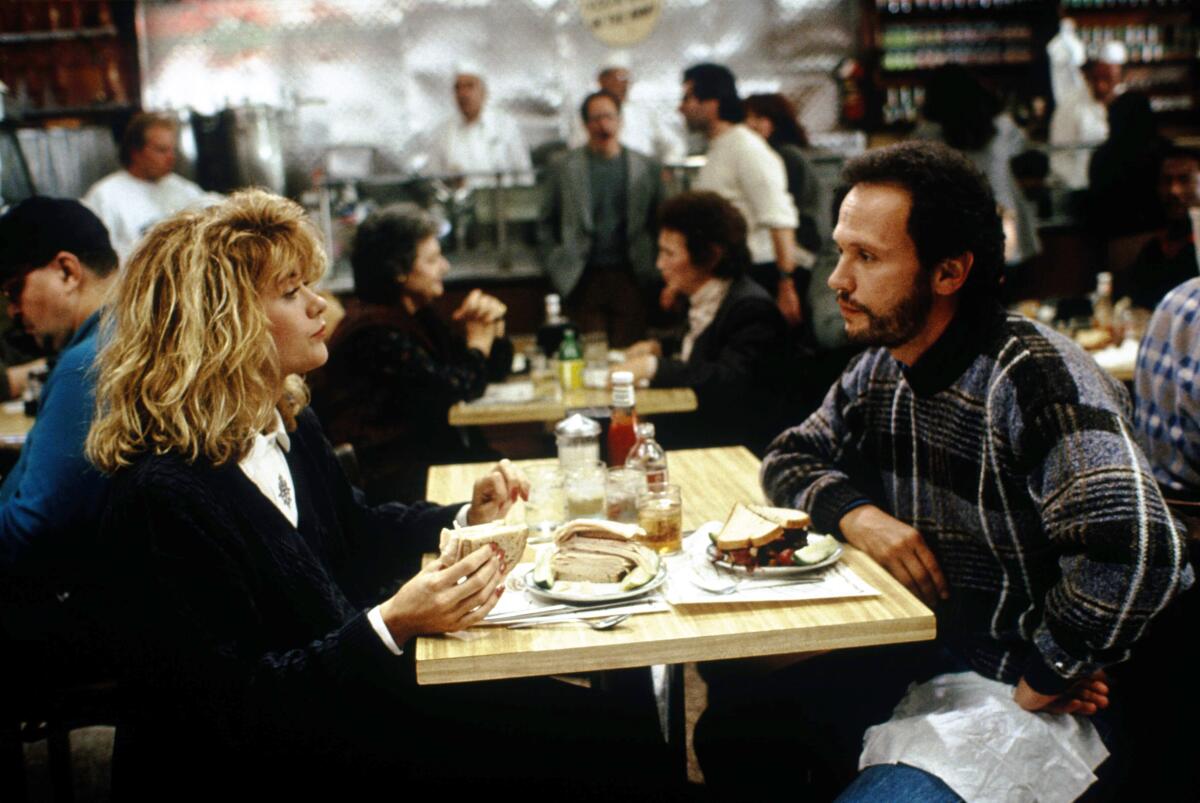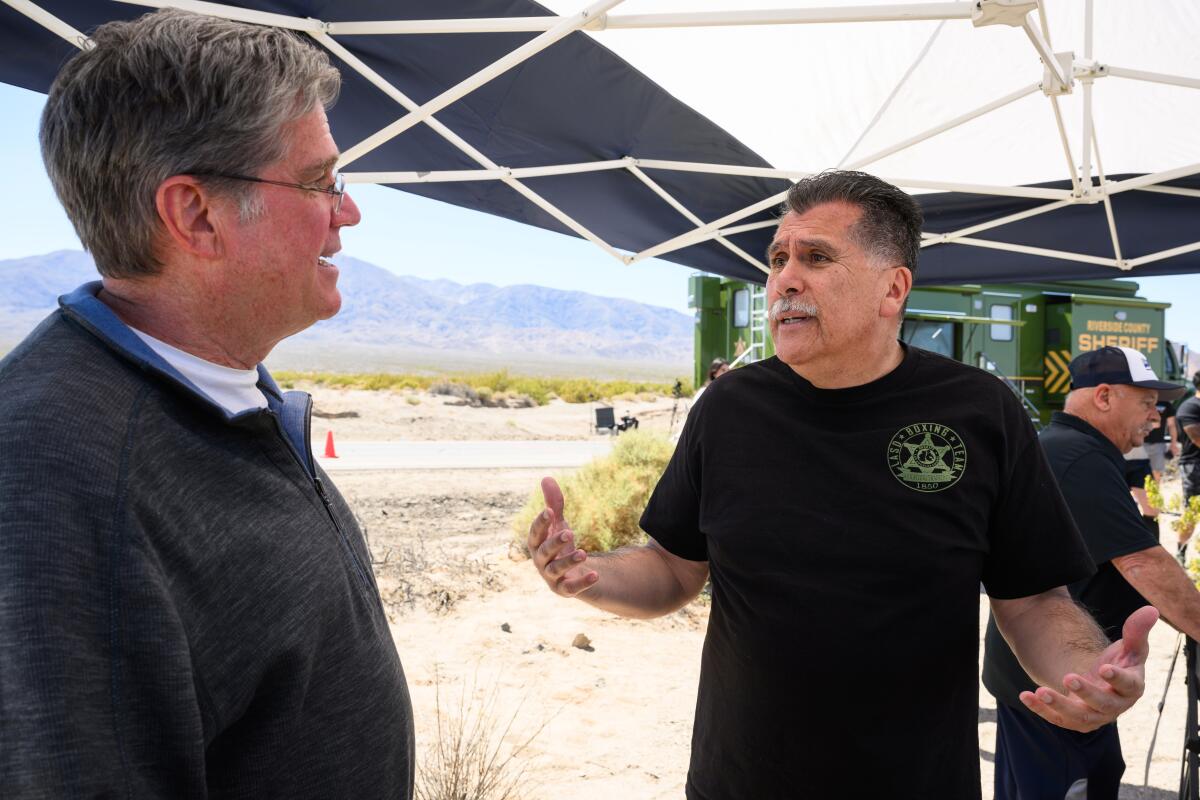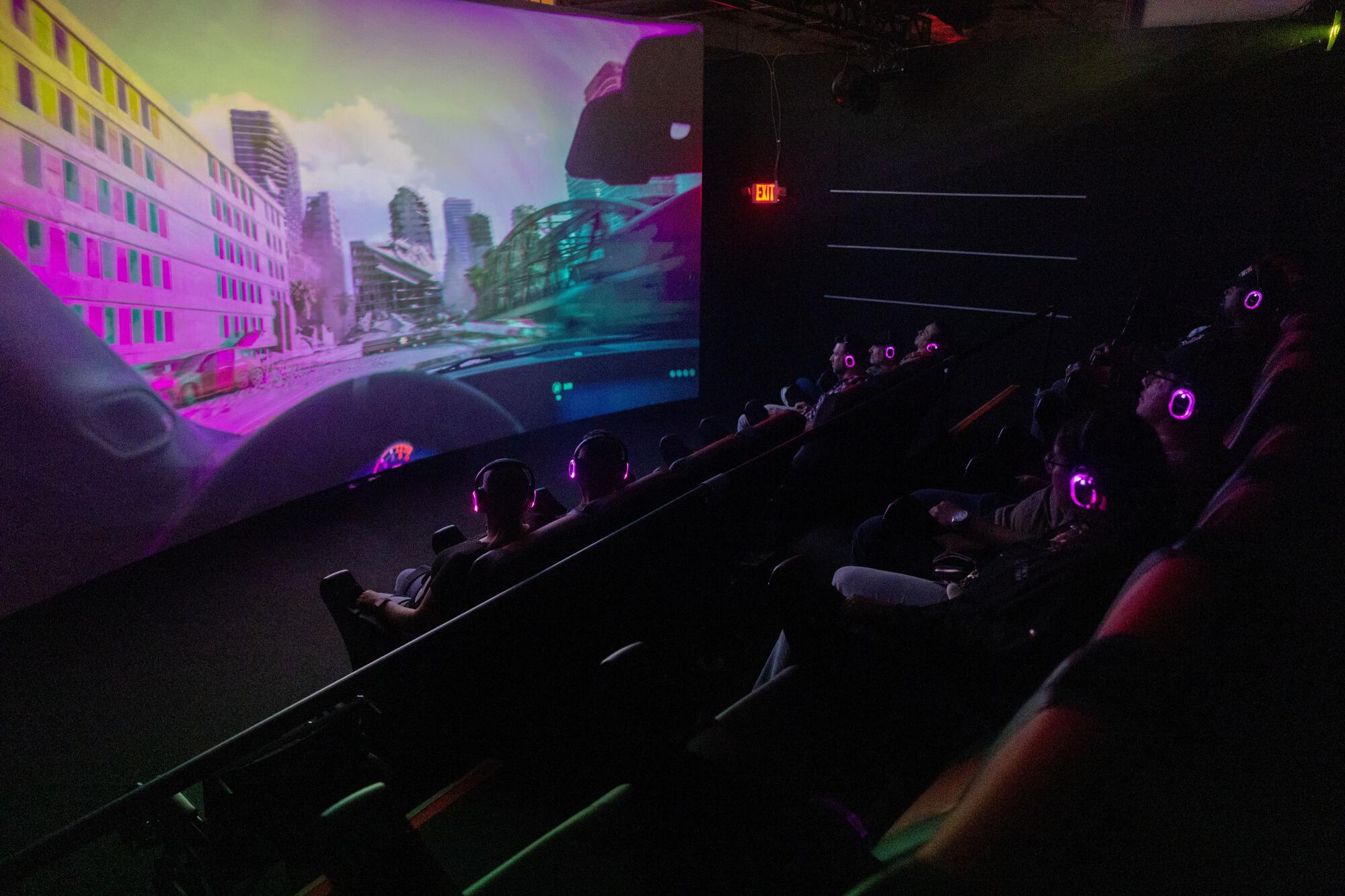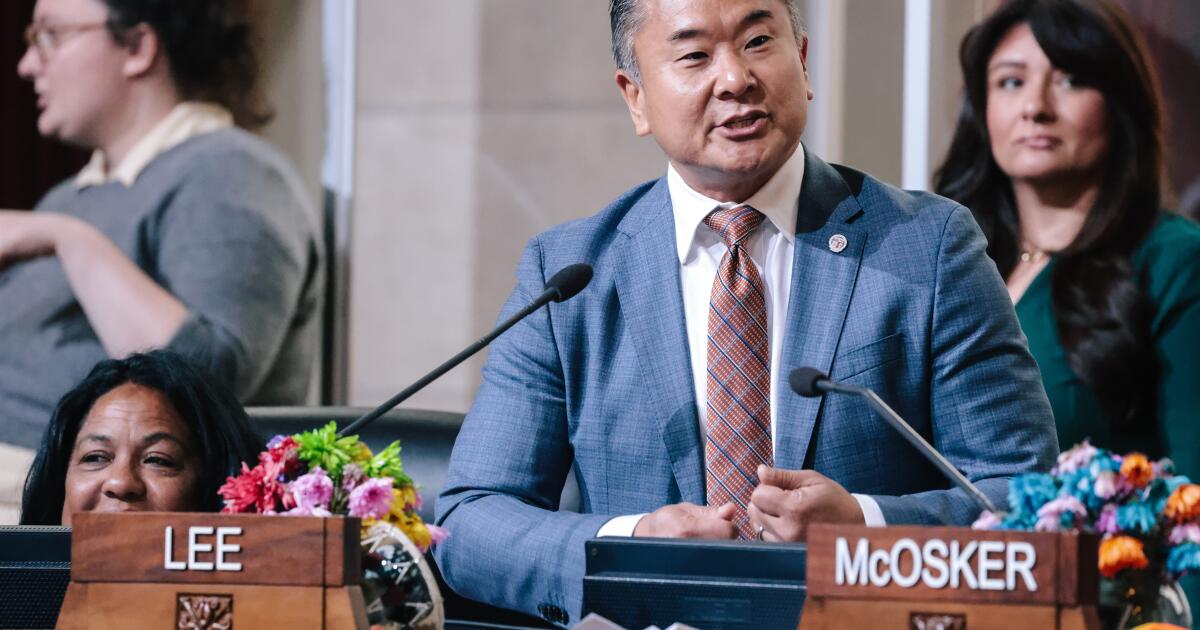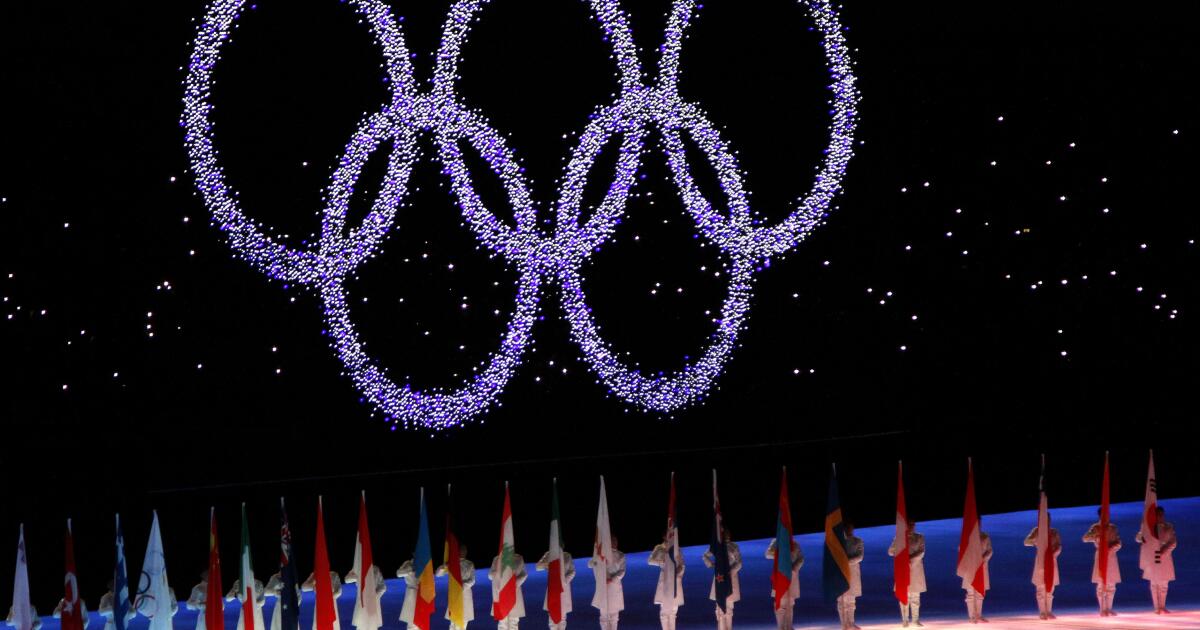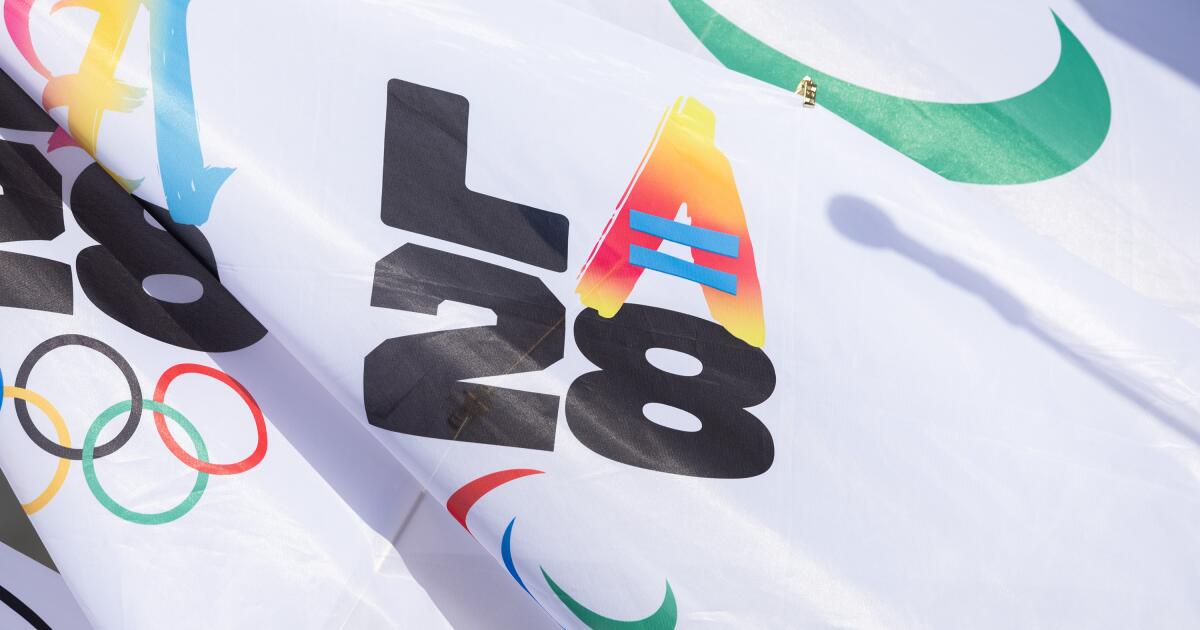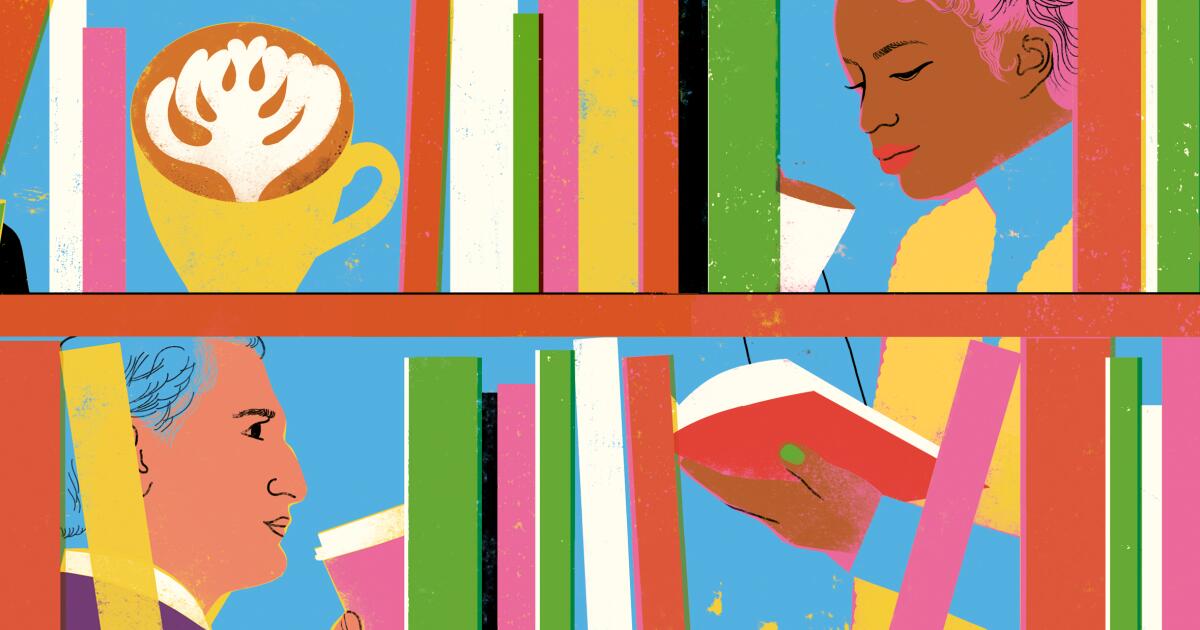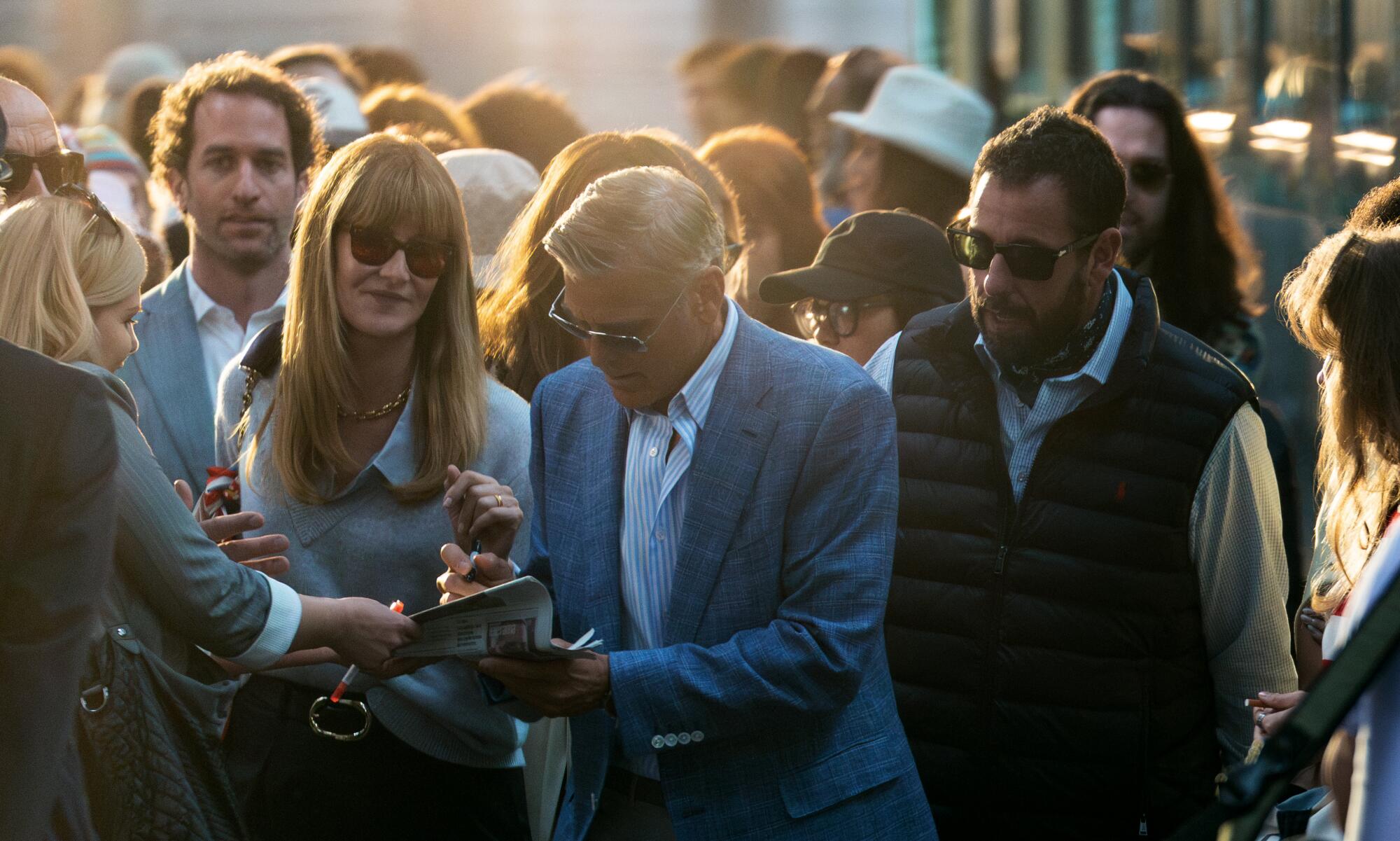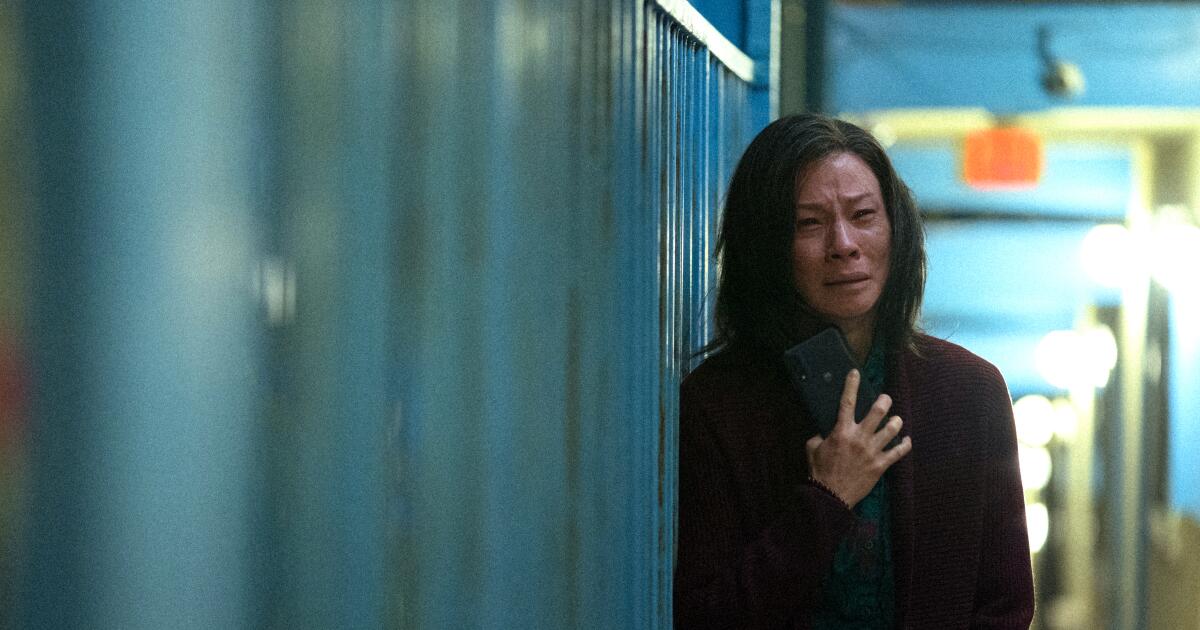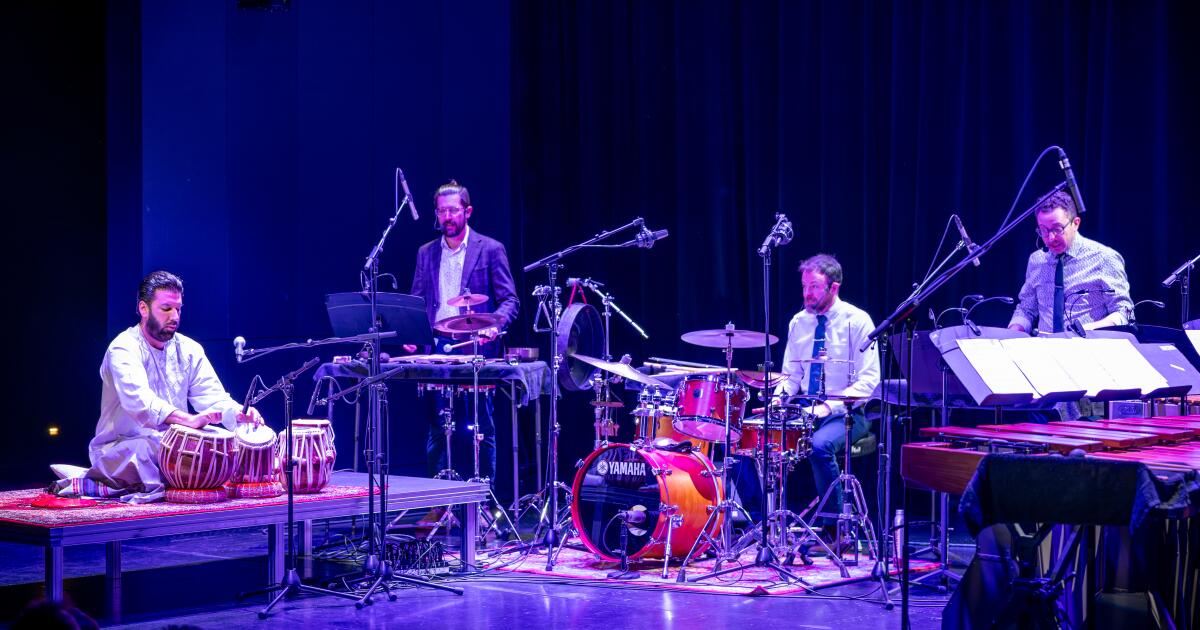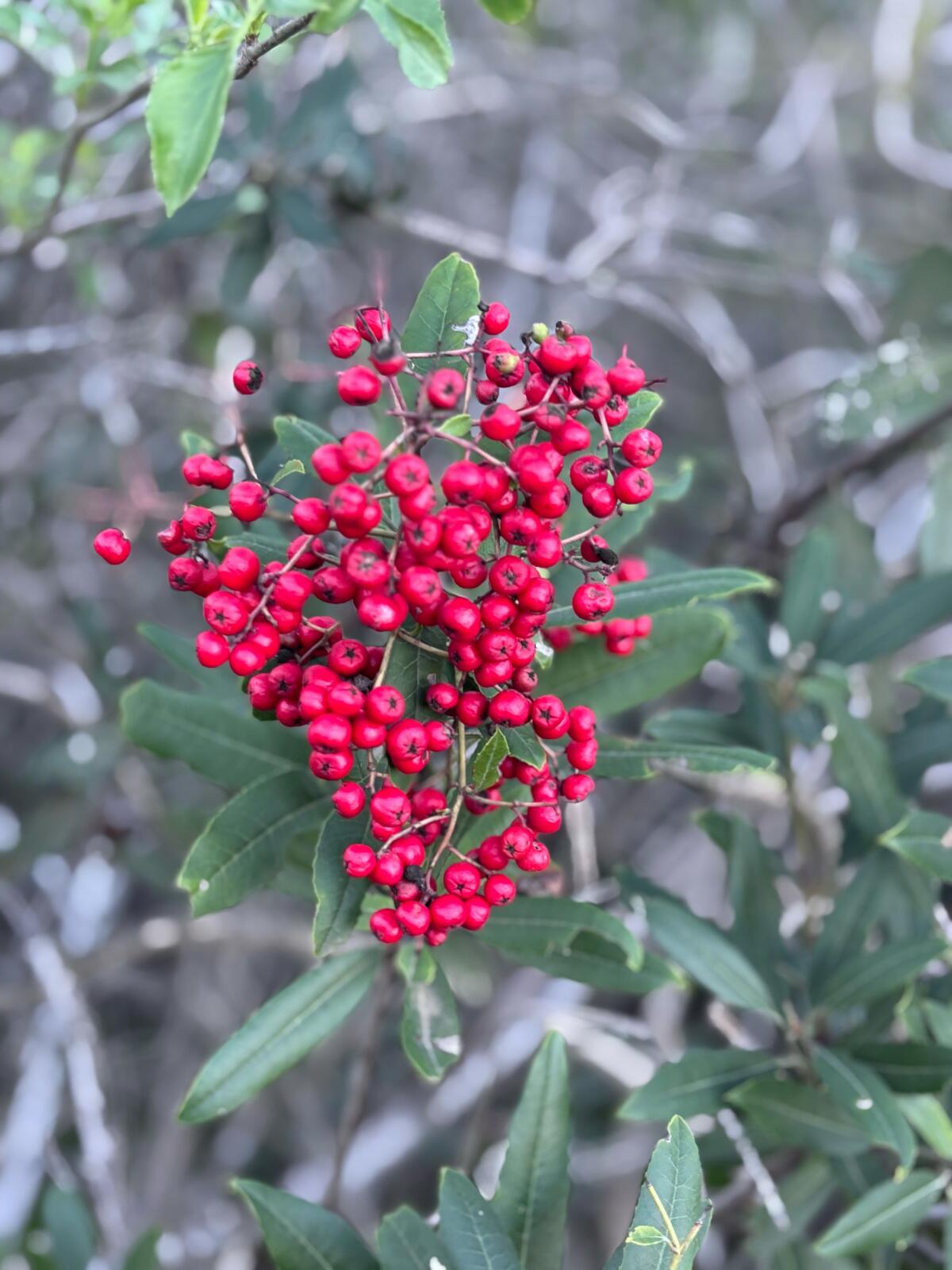Who is Bass running against? ‘The billionaire class,’ she says
Good morning, and welcome to L.A. on the Record — our City Hall newsletter. It’s Noah Goldberg giving you the latest on city and county government.
At her official campaign launch Dec. 13, Mayor Karen Bass told Angelenos that they face a simple decision.
After speaking about the Palisades fire, federal immigration raids and the homelessness and affordability crises, she turned to the primary election next June.
“This election will be a choice between working people and the billionaire class who treat public office as their next vanity project,” Bass told a crowd of a few hundred people at Los Angeles Trade Technical-College.

Attendees take their picture against a “photo booth” wall at Mayor Karen Bass’ reelection campaign kickoff rally.
(Myung J. Chun/Los Angeles Times)
In one sentence, without uttering a single name, the mayor appeared to be taking a shot at three different men. Was she talking about President Trump? Mayoral hopeful Austin Beutner? Her previous opponent, the billionaire developer Rick Caruso?
Or how about all of the above, suggested Bass’ campaign spokesperson, Doug Herman.
The billionaire class certainly includes Caruso, who self-funded his 2022 campaign to the tune of more than $100 million. It also includes Trump, who the New York Times estimated could be worth more than $10 billion. Though the mayor is not running against Trump, she likes to cast herself in opposition him. And Beutner, a former Los Angeles schools superintendent, was once an investment banker, Herman pointed out.
Beutner confirmed to The Times that he is not a billionaire. To the contrary, Beutner said, he drives a 10-year-old Volkswagen Golf.
Herman said Angelenos don’t care if Beutner has billions or just a lot of millions.
“Whether you’re a billionaire or multimillionaire is not really important to someone having trouble getting by and playing by the rules,” Herman told The Times.
“I’m trying to find the polite words,” Beutner said when asked about Bass’ comments. “Frankly, I think it’s an attempt to distract people from her record or lack thereof.”
Caruso declined to comment.
In a speech at Bass’ campaign launch, City Councilmember Hugo Soto-Martínez hammered the same point as the mayor.

City Councilmember Hugo Soto-Martínez shows his support during Mayor Karen Bass’ reelection campaign kickoff rally at Los Angeles Trade-Technical College.
(Myung J. Chun/Los Angeles Times)
“We’re always going to have rich old white men, the millionaires and billionaires — they think they can do it better,” he said. “They didn’t get it last time, and they’re not going to get it this time.”
Then, Soto-Martínez seemed to reference Beutner.
“Do you want a healthcare worker over a hedge fund manager?” he asked the crowd, to roaring applause (Bass used to work as a physician’s assistant, while Beutner founded the investment banking advisory group Evercore Partners).
With Bass’ reelection campaign underway, Beutner challenging her as a moderate and community organizer Rae Huang running to her left, Caruso could be the last major domino left to fall.
The Grove and Americana at Brand developer, who has been mulling a run for either governor or mayor (or neither), still has not revealed his plans for 2026.

Karen Bass supporters created signs for her reelection campaign kickoff rally.
(Myung J. Chun/Los Angeles Times)
Stuart Waldman, president of the Valley Industry & Commerce Assn., was among the diverse array of Bass supporters gathered on stage at Trade-Tech to voice their endorsements.
Waldman told The Times that he is supporting the mayor in his personal capacity, though VICA has not yet endorsed.
In 2022, Waldman and VICA supported Caruso, and Waldman spoke at some Caruso events.
He said he switched to Bass this time partly because of his unhappiness with the $30-minimum wage for airport and hotel workers passed by the City Council earlier this year. Businesses cannot move quickly enough to raise worker wages without laying off other workers, he said.
Waldman said that Bass arranged for him to meet with Council President Marqueece Harris-Dawson, who then introduced a motion that would phase in the minimum wage increase over a longer period. The current law brings the wage up to $30 by 2028, while Harris-Dawson wants the $30 minimum to start in 2030.
“Bass was instrumental in making that happen, and we appreciate that,” Waldman said.
Harris-Dawson, a Bass ally, was at the campaign kickoff but did not make a speech.
Some were not pleased with his minimum wage proposal. Yvonne Wheeler, who is president of the Los Angeles County Federal of Labor and was at the Bass event, called it “shameful.” Soto-Martínez, who co-sponsored the minimum wage ordinance, also opposes Harris-Dawson’s proposal.
Waldman said that Soto-Martínez refused to take a meeting with him during the minimum wage fight.
“Hugo and I come from two different worlds and see the world differently,” Waldman said. “Unfortunately, I am willing to talk to everybody, and he is not.”
But at the Bass campaign launch, the two men delivered speeches one right after the other. Waldman said the diversity of opinion among the mayor’s supporters is a good sign for her.
“It’s a broad coalition,” he said.
State of play
— AFTER THE FIRES: The Times posted a project called “After the Fires” online Wednesday, nearly a year after the Palisades and Eaton fires. The stories, which document mayoral missteps, changes at the LAFD, failed emergency alerts and more, will be published as a special section in Sunday’s print edition.
— VEGAS, BABY: Councilmember John Lee is facing a steep fine for his notorious 2017 trip to Las Vegas, with the city’s Ethics Commission saying he must pay $138,424 in a case involving pricey meals, casino chips and expensive nightclub “bottle service.” The commission doled out a punishment much harsher than that recommended by an administrative law judge. Lee vowed to keep fighting, calling the case “wasteful and political.”
— EX-MAYOR FOR GOVERNOR: Four Los Angeles City Council members — Harris-Dawson, Heather Hutt, Bob Blumenfield and Curren Price — threw their support behind former L.A. Mayor Antonio Villaraigosa to be the next California governor.
— POOLS OUT FOR WINTER: City swimming pools will be closed on Fridays “until further notice,” the Department of Recreation and Parks announced Monday. “These adjustments were necessary to continue operating within our available resources,” the department said on Instagram.
— HOT MIC: Bass was caught on a hot mic ripping into the city and county responses to the January wildfires. “Both sides botched it,” she said on “The Fifth Column” podcast, after she shook hands with the host and they continued chatting. The final minutes of the podcast were later deleted from YouTube, with Bass’ team confirming that her office had asked for the segment to be removed.
— HOMELESSNESS FUNDING: The Los Angeles County Affordable Housing Solutions Agency on Wednesday approved nearly $11.5 million in homeless prevention funds, the largest single allocation yet for the new agency.
— A YEAR OF JIM: After more than a year as the LAPD’s top cop, Chief Jim McDonnell is receiving mixed reviews. While violent crime is at historic lows, some say the LAPD is sliding back into its defiant culture of years past.
— “CALM AMIDST CHAOS”: LAFD spokesperson Erik Scott announced this week that he has written a “frontline memoir” about the January wildfires. The book is set to be released on the one-year anniversary of the Palisades fire.
— “THE GIRLS ARE FIGHTING”: Mayor Karen Bass and L.A. County Supervisor Lindsey Horvath got into a tiff on X over homelessness. After Bass published an op-ed in the Daily News saying that the county’s new Department of Homelessness is a bad idea, the supervisor shot back, calling the mayor’s track record on homelessness “indefensible.” Following the spat, City Councilmember Ysabel Jurado posted on X, “I fear the girls are fighting.” And Austin Beutner, who is running against Bass, responded with a nearly six-minute video criticizing the mayor’s record on homelessness.
— OVERSIGHT OVER?: Experts worry that effective civilian oversight of the L.A. County Sheriff’s Department could be in jeopardy following a recent leadership exodus. A succession of legal challenges and funding cuts, coupled with what some say is resistance from county officials, raised concerns that long-fought gains in transparency are slipping away.
QUICK HITS
- Where is Inside Safe? The mayor’s signature program did not conduct any new operations this week. The team “returned to previous Inside Safe operation locations, building relationships with unhoused Angelenos in the area to offer resources when available,” the mayor’s office said.
- On the docket next week: Mayoral candidate Rae Huang will host a text bank and volunteer meetup at Lawless Brewing on Monday, Dec. 22. The City Council remains in recess until Jan. 7.
Stay in touch
That’s it for now! We’ll be dark next week for the holidays. Send your questions, comments and gossip to LAontheRecord@latimes.com. Did a friend forward you this email? Sign up here to get it in your inbox every Saturday morning.

